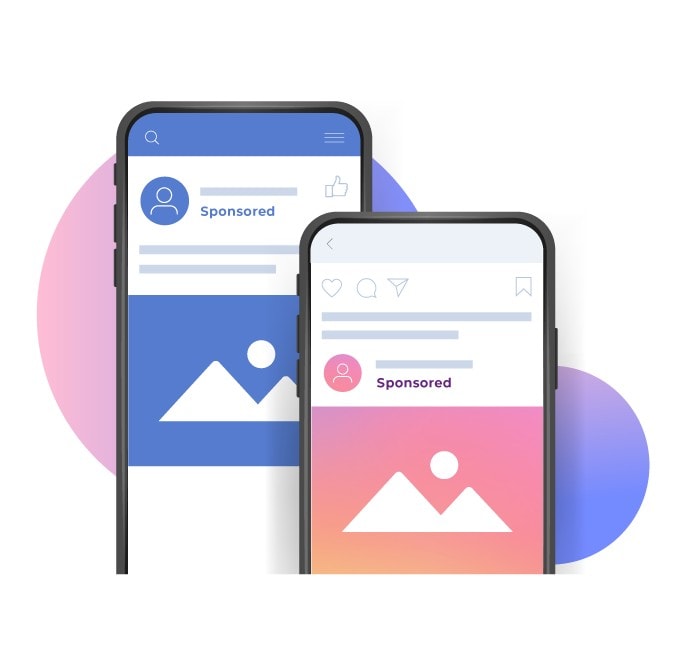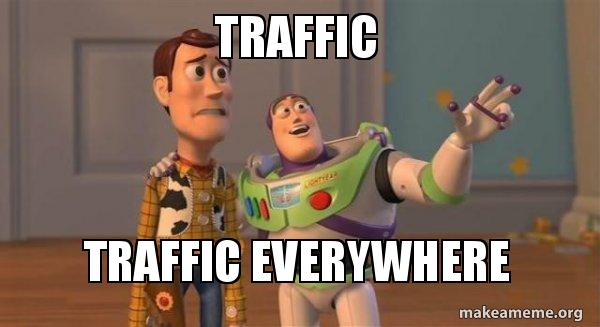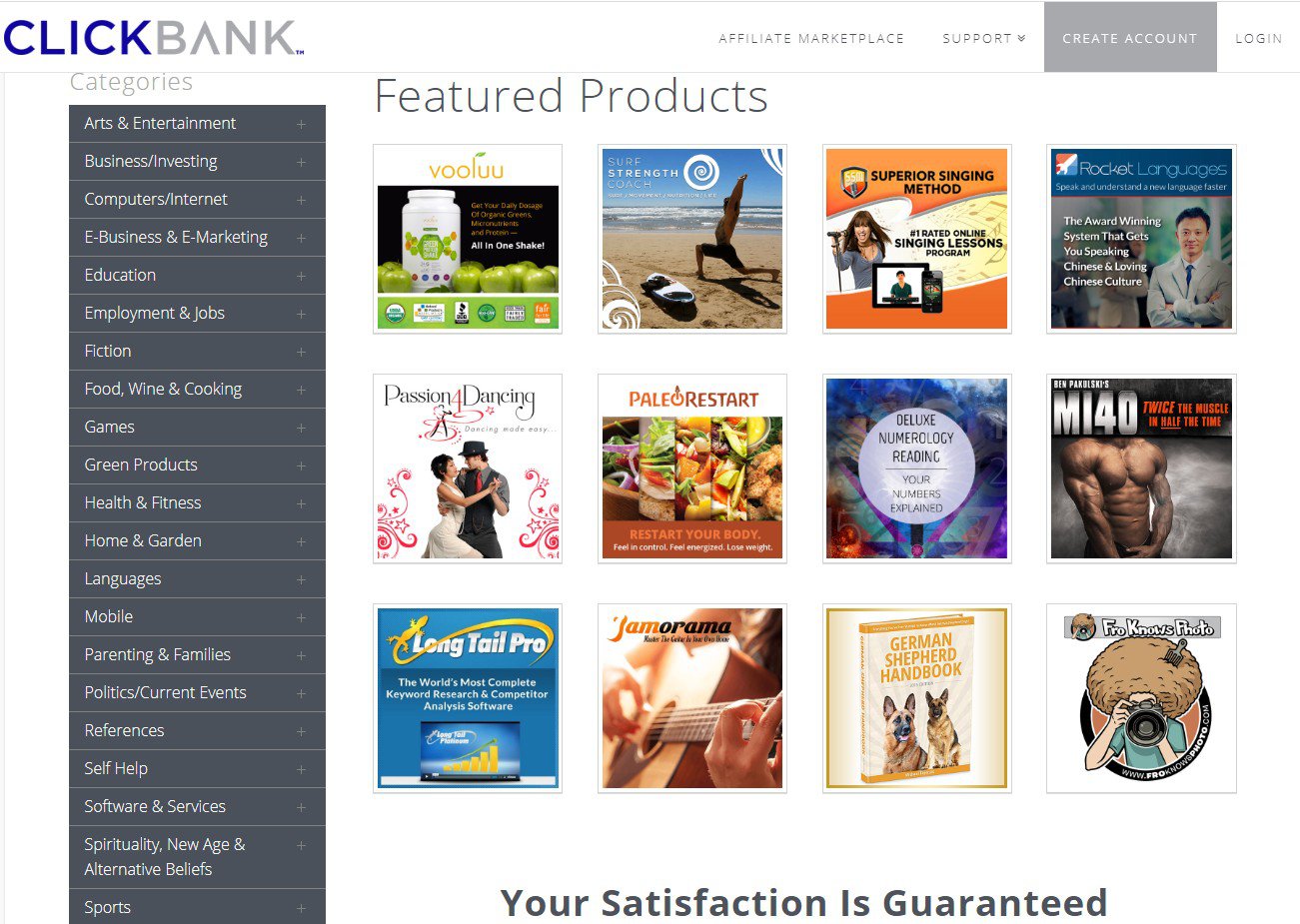Affiliate marketing can be a dram job for many, especially for those, who want to be independent and work from home. But many are deterred by the supposed high level of technical knowledge required for this line of job. Mainly, it’s about setting up their own website, often called a ‘landing page’.
If only they could do affiliate marketing without needing to create a website…
They can! You can!
The thing is:
You don’t need startup capital. You don’t need experience. You don’t need an office. You don’t need a community. Hell, you don’t even need a website.
There are many ways to reach people on the Internet without worrying about designing and hosting a website.
Keep reading.
Affiliate Marketing Basics
Before we move on to discussing if you really need a website to become a successful affiliate, let’s talk about the things that you absolutely must have to start (and succeed). Don’t worry, though. It’s not much.
In a nutshell, your major goal as an affiliate is to deliver the right offer to the right customer at the right time. And that essentially comes down to two key elements: an offer and a source of traffic.
Offer: What you promote
In order to make money, you need to have something to market (i.e. to advertise).
That’s why the very first thing you absolutely need is the right offer. Many companies use affiliate marketing as an additional sales channel that allows them to get to people that would normally be outside their reach. Check out affiliate programs from the likes of behemoths like Amazon or Ebay, check out your favorite gaming or travel companies – you would be surprised how many of them have affiliate programs!
Or, you can join a bunch of affiliate networks to make the search a little bit easier. Affiliate networks are platforms where often smaller companies try to find advertisers for their products.
Ad network: Where you promote it
That offer of yours has to be advertised somewhere. Be it Facebook, Google, or your girlfriend’s lifestyle blog. The better the match between the traffic source’s target audience and the contents of the offer you are promoting – the higher the chance that it will be a profitable deal.
That’s the basics of the basics.
Now, the tricky part is to sell your offer to the audience. And that’s where the landing page comes in.
Website aka Landing page for Affiliate Marketing
While having an entire website just for your affiliate deals may seem a little too much, setting up a landing page for each of the offers you promote is just as important as choosing the right traffic source.
Why?
It’s pretty simple, really. Landers increase conversions. Do you really need more intel than that? Probably. So here’s how it all works.
What is a landing page?
A landing page is a one-page website, so technically – yes, you may need to know how to develop one. At the same time, landers are pretty easy to set up and you can use the same draft for as many pages as your heart desires. Just customize each one a little bit for a specific promo – and you’re all set!

Let’s be honest – affiliates don’t always have the best reputation with the community. Affiliate links may seem suspicious and the services they redirect to tend to be frowned upon. Landing pages however, – when friendly and sincere – can make the entire customer experience a little more transparent. And people love transparency these days.
Landers make your offers more informative
It’s true that brevity is the soul of wit. It’s a little less true, though, when you are trying to sell something. People need a clear understanding of what they are about to invest in. But it’s not always possible to fit all that in the limited amount of characters provided by the publisher.
Of course, it also means that you need to provide an effective copy and invest in the appropriate design for your lander. But in the end, it can almost guarantee you that long-hoped-for conversion.
With landing pages you seem more credible
Some of the largest affiliate programs (e.g. Airbnb) evaluate your worth as a potential partner affiliate based on your online presence. Here, actually owning a website (or a lander) may become a decisive factor.
Think of that as submitting your Facebook or LinkedIn profile while applying for a new job. Recruiters are driven by your online presence and, as an affiliate, it’s often reduced to a one-page website telling the story of your successes.
Moreover, there’s no better place to store all the positive feedback you received over the years. Social proof is a valuable currency these days – use it!
And it doesn’t have to be difficult! I even wrote a very detailed article with an overview of the best landing page building tools on the market – go ahead and check it out or try Zyro website builder if you’re looking for something off the beaten pass.
I’m sure you’ll find something to satisfy your affiliate needs!
Lander Vs Pre-Lander: Key differences
Let’s take a step back for a second and talk about pre-landers.
Shorter and more straightforward than your typical landing pages, pre-landers appear right before the offer and serve one purpose only – provide potential customers with the general idea of what the offer is going to be about.

Pre-landers pop up right before a user is about to be redirected to your offer and tell them a story about the product, about the offer, or about you. They are a great way to generate engagement and increase conversions. At the same time, landers are much more suitable for lead generation.
However, for either of those elements to bring you any use at all, you need to make sure everything works smoothly. One way to simplify things is by investing in a proper ad tracker.
What’s an ad tracker and how can it help?
Ad trackers, like Voluum, help digital marketers and affiliates to gather data on their potential customers online.
Do you want to know where most of the people interacting with your ad are coming from? It could help you adjust your message to match the cultural and social values of the target group.
Curious about what operating systems your TA is using? Perhaps, you should spend more time optimizing your ad’s mobile responsiveness.
Always wanted to see which keywords brought people to your ad in the first place? A/B test different ad copies and see what kind of audience responds to different messages.
Imagine all the great marketing you could do knowing exactly who you’re marketing it to!
And ad trackers are the tools that let you do just that.
In a way, investing in a good ad tracker is exactly what sets super-affiliates from beginners. So why not do things the right way from the start?
Having a lander and using it for affiliate marketing makes things so much easier. But if you want to do it the hard way – you can try and succeed as an affiliate without a website too.
Affiliate marketing WITHOUT a website
We’ve already established that you don’t really need a website to be an affiliate.
I guess you expected a bit more than that from this post though. So, let’s see how great your affiliate life could be without wasting hours on choosing the perfect template for your personal brand.
Here are 3 bulletproof ways to make money as an affiliate without a website.
1. Use existing traffic
The main reason why you don’t need your own website is that even if you had one, there’s a thick chance people would still stick to what they know anyway. There is one thing the Internet is not short of – traffic. Whether it is Medium, or Udemy, or Reddit, or YouTube, or literally anything else that pops in your mind – go ahead and advertise your affiliate links there.
There is one definite advantage any of those traffic sources has over your not-yet-completed hypothetical website – it has traffic. And, essentially, traffic is the only thing that matters here.
2. Advertise on Social Media (i.e. Facebook, Instagram, Twitter, etc.)

Social media platforms are high-quality traffic sources. That’s why most of them would offer paid advertising plans for affiliates/business owners or may restrict access to intermediaries whatsoever.
Running affiliate ads on social giants like Facebook and Instagram may seem attractive and simple at first, but there are many pitfalls to beware of there.
3. Work with affiliate programs that don’t require having a website (e.g. ClickBank, Amazon)
A lot of well-known affiliate marketing programs (see our guide through the best ones here) would cooperate with affiliates who don’t have their own website. And, some of the most common solutions include ClickBank and Amazon. It’s a great way to get started in the business.
Yet again, having a friendly landing page or a short pre-lander will significantly boost your conversions and give you access to better-quality affiliate programs, networks, and ad exchanges.
4. Use a lead magnet
A lead magnet is something that people want and are being drawn to it with a metaphorical magnetic pull. This could be an ebook or an e-learning course, whitepaper, industry report, newest stats or any other gated content.
Once you have it, you can direct people straight to the offer because you used the lead magnet to advertise it. For example, if your offer is fishing equipment, write an ebook about the specific part of fishing that is related to your offer and pitch that offer there. Don’t be too salesy, your ebook still needs to provide value to the reader on its own. Be informative and honest, and people will reward you for this with visits and conversions.
5. PPC Marketing for the rescue
You can always pay for traffic. Ad networks aggregate ad space from publishers in one place, and you can use their targeting options to carefully outline where you want your add to appear. You then pay for each click (PPC – pay per click) that leads to your offer.
While many affiliate marketers use a landing page in between an ad and an offer, there are some category of offers that don’t require further advertising. App install ads for example usually lead straigh to the app store page and all the additional advertising is done there.
6. Email & SMS marketing is not dead
This requires you to gather or purchase a lsit of email addresses or phone numbers. The good thing is that if you do get them, you will be able to market your offer efficiently and without the need of having an external page. Text messages or emails already contain some text and they usually direct straight to the offer.
7. Put your affiliate link in forum posts
Forums are very much alive and they haven’t been killed by social media. Many people appreciate clear structure and lack of algorithms and find many forums to be a great place to find relevant information. Be active on forums related to your offer category, respond to posts and put your affiliate links there.
8. Create a YouTube or TikTok channel
People love watching videos. It’s the best way to put your message out there – better than writing on social forums. It is also harder – having a video channel on a dedicated platform such as YouTube or TikTok requires you not only having something to say but also taking care of the visual side: the camera, the presence, editing.
But if you only manage to address those issues, you can get a way of reaching potentially thousands or even millions of people without setting up a single web page.
9. Record podcasts
Don’t want to put yourself in front of a camera? Record a podcast! The popularity of those exploded a few years ago. People LOVE to hear other people while commuting, jogging or cooking. The most popular podcaster attract millions of listeners. All you need to start is a microphone and an idea!
Tips on how to be seen without a website
You now know how oyu can advertise offers without the hassle of setting up your own website. But to do this efficiently, go through the tips below.
Prepare quality content
In the times of AI-generated texts, content is still the king. AI is not so precise, it produces bland and repeatable content. When you don’t have a separate website with a lot of text, your advertising should be short and to the point.
Learn the audience
You should have a general idea about what kind of people may be interested in your offer. Research your audience before you launch the first advertising campaign. Think about who they are and what kind of problems they have and how your offer can solve it.
Research keywords
With or without a website, keyword research is marketing 101. Use free or paid tools to learn what people type into search engines to find offers like your own and build your strategy around it. Without a website, you won’t be able to leverage SEO efforts to your advantage, but you could still use the keywords when advertising on forums or social media, or with PPC marketing on search engines. This way your posts will be more findable to the relevant audience.
Track affiliate marketing campaigns without a website with Voluum
If you were reading carefully, you can see that running affiliate marketing campaigns without a website can be a bit of a b… Yet, it doesn’t have to be. The key issues you can face as an affiliate trying to build your business include:
- Dealing with inconsistent, low-quality, or fraudulent traffic
- Struggling with selecting the best-performing offers
- Managing several campaigns at once
- Analyzing, optimizing, and testing your existing ad campaigns
There’s a remedy for that. And the remedy is an ad tracker. But not just any ad tracker – a really good one, the one created by affiliates who’ve been there and who know your struggles firsthand.
The remedy is Voluum.
With Voluum you can…
✅ Automate your entire advertising process and access multiple campaigns from a variety of traffic sources from one single platform.
✅ Set up rules and alerts for Voluum to take actions automatically whenever something changes, instead of sitting in front of your screen refreshing the page like a maniac.
✅ Even integrate your Voluum account with Facebook (and so Instagram & YouTube) and access premium traffic nearly hustle-free!
With Voluum, it truly doesn’t matter if you have a website or not – you have an advanced AI-powered solution that will take care of your affiliate ad campaigns for you. So why not give a try right away?
Here’s a quick take-away for you:
- You can do affiliate marketing without a website;
- Use existing traffic, social media, and different affiliate programs to promote your affiliate links without a website;
- Having a website makes you look more professional and trustworthy among both customers and large affiliate networks;
- Get an ad tracker like Voluum and stop worrying about getting a website, focus on your campaigns instead!
So, if you’re not very tech-savvy and just a thought about developing your own website terrifies you – relax, you can become an affiliate legend without learning a thing about programming. Yet, if you also don’t wanna miss out on all the sweet perks and do it oh-so-much faster – just do it and join the cream of the crop of affiliate world faster.
Get even better results with Voluum – with or without a website!
No banner with provided ID found







4 comments
Nice article, you can send email also via solo ads.
but you should ask your am at first.
I suggest to join suitable networks like maxbounty, peerfly, mostcpa
and then start your journy.
Very useful post. This is the first time I visit here. I found so many interesting stuff in your blog especially its discussion. Really its great article. Keep it up.
Thanks a lot informative post. Is there any alternative to ClickBank?
Great post! Absolutely for affiliate marketing, you don’t need to have a website, you only need traffic or audience and it may be on your youtube channel, Instagram, or Facebook. What is must only to paste the affiliate link on your post for verifying the sales made through your post or video.